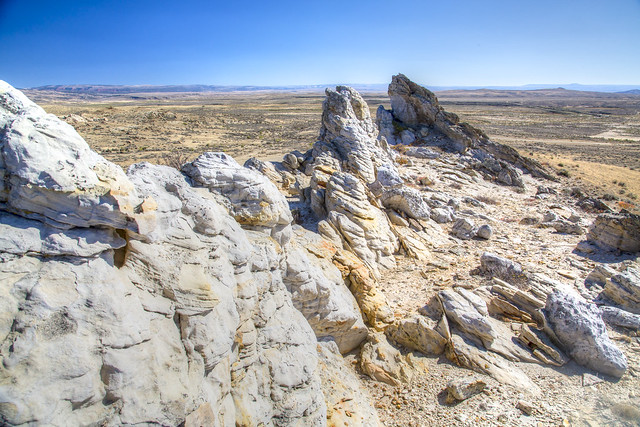Oregon, Mormon Pioneer, California & Pony Express National Historic Trails Corridor
The trails facilitated a major part of the westward expansion of the United States during the 19th century and area a major part of the colorful history of the Rocky Mountain west.
Important historical sites along the trail include Independence Rock, Devil's Gate, Split Rock, Ice Slough, Rocky Ridge, Willie's Handcart Disaster Site, South Pass and Parting of the Ways. In addition to the above, there are numerous state stops, telegraph stations, military posts and river crossings that played an important role in the history of the trails. Highway turnouts near many of the sites contain interpretive markers and provide excellent vantage points from which to view the trail corridor and the surrounding countryside.
While much of the NHT corridor in Wyoming is undisturbed, some portions have been improved and are now two-track or graded roads. Other portions have been obliterated by highway construction. However, visible trail remnants can be seen from Independence Rock to Farson, Wyoming.


